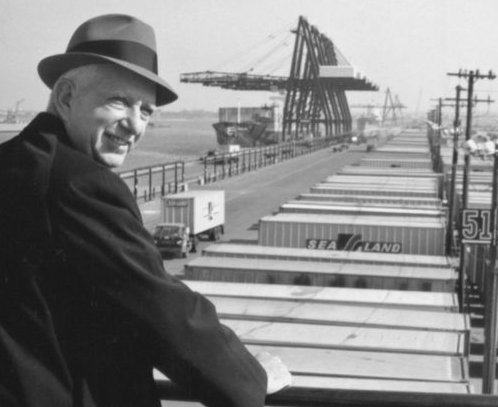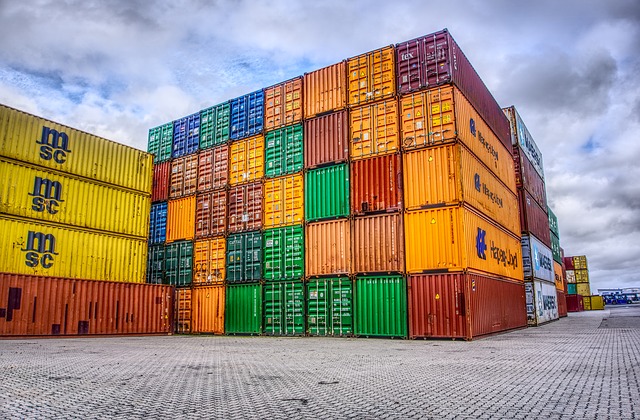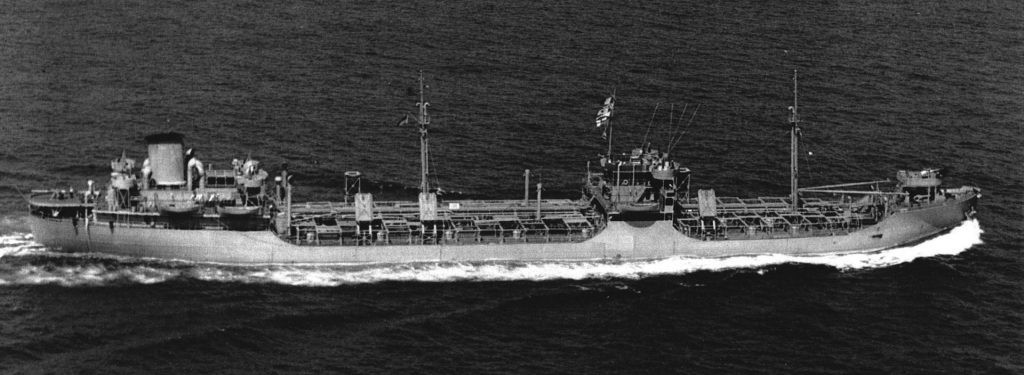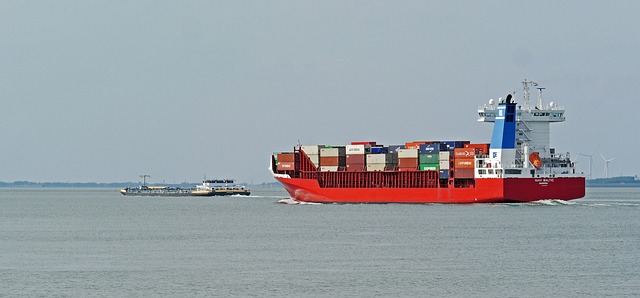When it comes to container transport Perth has a rich history, as anyone who has ever watched a container ship dock at Fremantle Port can attest. The invention of the shipping container was a particularly significant innovation for Australia, as it has opened up vital efficient trade routes with faraway overseas countries. In addition to this, it has allowed new citizens to safely bring furniture and other prized possessions with them as they start their new lives on the other side of the world. These days the use of shipping containers has evolved to the point that people are now choosing to reinvent them as homes in a bid to find an affordable and surprisingly spacious place to live. But did you know that the shipping container as we know and rely on it today is a relatively recent invention?
What Came Before the Shipping Container?
Before the arrival of the shipping container, transporting goods and belongings across the ocean was a risky, labour intensive and often haphazard process. As anyone who paid attention in history at school knows, moving cargo by sea is a practice that dates all the way back to Roman times. Throughout history, goods were stored in enormous dockside warehouses and loaded onto ships as and when they became available. Loads were known as break bulk cargo and took the form of sacks, crates, barrels and bales – whatever was available! A typical ship would have around 200 000 items of cargo on board and it could take a week for larger ships to unload and reload. Not only was this time-consuming, it caused congestion at ports resulting in delays and blockages, particularly when trains arrived on the scene and cargos had to be reloaded onto the rail network for their onward journeys.
Who Invented the Shipping Container?
The well-ordered, standardised containers we are familiar with today were originally the brainchild of a successful American transport entrepreneur, born in 1914 and named . As the wealthy owner of a successful transport business, McLean first found the beginnings of inspiration as he watched a routine delivery of cotton bales in 1937 and was struck by how labour intensive and time-consuming the whole process was. Fast forward to 1950 and McLean owned over 1750 trucks and 37 transport terminals making his truck transportation business the fifth largest in America. Frustrated by new laws that meant his trucks were often fined for heavy cargo loads, McLean was reminded of his musings back in 1937 as he witnessed the drain on time and money that loading and unloading a shipping cargo entailed.
The Lightbulb Moment
Spurred on by his need to avoid the new and crippling fines, McLean came up with a simple yet ingenious plan. He put the wheels in motion to create a standard-sized ‘trailer’ or container, that could be loaded onto ships. The repercussions of this were enormous because he could now fit hundreds of these containers onto a ship compared to the one or two that could go on a truck at any one time. Now he was in the enviable position of being able to completely transform his transport business by eliminating most of his trucks and moving his cargo by sea to well-placed trucking hubs. Not only did this mean that trucks only needed to be used for relatively short journeys, he had also got around the recently-introduced weight restrictions and levying fees that had been hitting his profits.
Making it Happen
Like any good business idea, putting it into practice took time and money. But McLean was so convinced by his plan, he took out a bank loan for $42 million – an almost unimaginable sum of money in 1955! He then used $7 million of this fund to buy a business called the Pan-Atlantic Steamship Company because of its valuable assets in the form of docking rights in many of the USA’s key eastern port cities. He renamed the business Sea-Land Industries and set about developing what would become the world’s first standardised shipping container, designed to be stackable and resilient. Crucially this new container was also lockable which meant the centuries-old problem of cargo theft was now eliminated.
The Final Piece of the Puzzle
McLean now had his shipping business and his standardised container. Now all he needed was a ship that his containers would fit on! He solved this problem with typical aplomb by using his considerable financial clout to buy an oil tanker named Ideal X and having it modified to hold 58 of his new containers plus 15, 000 tons of petrol. He knew he was on to a good thing when the reimagined Ideal X’s maiden voyage to Houston on the 26th April 1956 resulted in orders being taken for her return voyage to New Jersey before she had even arrived in Houston. This success was largely due to McLean being able to offer a 25% discount on the costs of the inefficient alternative methods of cargo and because the lockable containers made it impossible for goods to be stolen during transit.
The Gateway to Success
It wasn’t long before McLean commissioned the first ever purpose-built sea container ship, Gateway City who sailed her maiden voyage from New Jersey to Miami in October 1957. At the time, people were astonished at the fact that not only did the ship move the cargo at an unprecedented 30 tons per hour, it only took two groups of dockworkers to load and unload the cargo. The positive implications for business owners’ profits were enormous.
What Was the Real Cost?
As is so often the case, this innovation may have excited businesses who foresaw an efficient and profitable future, but there was a human cost involved. For centuries the occupation of stevedore was a major source of employment in major docks all over the world and a job that port-dwelling men could rely on to provide for their families in an uncertain world. Now in one fell swoop, the number of dock workers needed to load and reload cargo had been decimated. By the 1970s the huge number of redundancies galvanised many dockside union workers to go on strike, which disrupted this rapidly expanding industry. However, because of the massive financial benefits to businesses of containerised shipping, many of these workers at least received the consolation of a severance package.
Malcolm’s Millions
By 1970 Malcolm McLean’s Sea-Land Industries was the proud owner of 36 container ships, 27 0000 containers and an infrastructure involving over 30 important American ports. Having built the business up to this point, McLean then sold it to R.J. Reynolds for $160 million. McLean hadn’t quite reinvented the wheel, but this certainly wasn’t a bad outcome for someone who had reinvented the box!
What’s Changed?
McLean’s original containers measured 33 feet, however there were still standardisation issues in regard to size and corner fittings. Not only that, Sea-Land Industries’ main rival Matson’s containers measured 24 feet. As stacking needed to be efficient and all containers needed to fit on trains and trucks, it was clear a solution was needed. Matters came to a head during the Vietnam War when the US government was desperate to find a way to transport goods more efficiently and applied pressure for standardisation. In reaction to this, McLean agreed to release his patent to the vital shipping container corner posts and standards were agreed resulting in a recognised size by October 1970. These days we have 20 and 40-foot shipping containers as standard and the 20 foot containers known as Twenty Foot Equivalent Unit (TEU) have become the industry standard for referencing cargo volume.
Container Shipping and Globalisation
In April 1966, a ship named Fairland made Sea-Land’s first international voyage, all the way from the USA to the Netherlands with 236 containers on board. This was the watershed moment for huge expansion in the shipping container industry and as soon as 1968, ships had the capacity to carry an amazing 1000 containers. This has made container shipping a major player in globalisation over the past 60 years, with the cost of shipping cargo dropping by a whopping 90% and an amazing 90% of every item purchased globally having been shipped inside a container. Add to this the fact that approximately 1% of countries had container ports in 1966, rising to 90% in 1983 and it’s not hard to see the implications for the world economy. These days there are over 17 million shipping containers in the world, making over 200 million trips annually, with the globe’s largest shipping container, MSC Oscar boasting a capacity for an incredible 19224 containers. It’s little wonder that Malcolm McLean, who lived from 1914 to 2001, was named Man of the Century by the International Maritime Hall of Fame!
Whatever your transport needs in Western Australia, Gecko Logistics Group has a reliable solution for you, including the transport of shipping containers on our tilt tray, tilt semi and side loader trucks.




